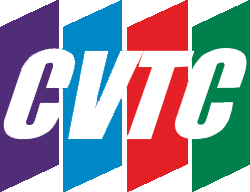In 2017, the Human Rights Act in Canada was amended to outlaw employment discrimination based on gender identity and expression. It was a long time coming and a long fight, with many employers not seeing the point of mandating something like that since many of them were very much in the ‘we don’t ask, so don’t tell us’ camp. The problem with that was that it meant many LGBT+ workers didn’t feel as safe and supported in the workplace, it was harder to get mentors, and it had overall detrimental effect on health, productivity, and general happiness, as well as finding and retaining talent. (After all, most people don’t want to work where they don’t feel comfortable).
Four years on, this is still something that many businesses grapple with. It’s getting better: the majority of major companies have non-discrimination policies targeting sexual orientation and gender identity and many of them also provide benefits that benefit same-sex partners and transgender inclusive needs. But there’s still a slog to go: about 30% of LGBT+ employees in Canada experience discrimination (compared to 3% of non-LGBT+ employees) and 33% have witness workplace discrimination. These can range from still serious problems like illegal interview questions and refusing to promote or give raises to things like how employees talk, joke, and interact with each other and with their LGBT+ colleagues.
Current Issues in the Workplace Around LGBT+ Rights
There are a few things which stand out for many in the LGBT+ community when it comes to dealing with the workplace:
- A lack of role models in leadership positions
- Being told on one hand that they should not have to hide their identity and on the other hand, talking about it is unprofessional
- Worries about feeling judged
- Lack of visible leaders, allies, and supporters in the workplace
- Fear of losing their job or promotion prospects
- Inappropriate or uncomfortable jokes
So, while legally, LGBT+ employees are protected in the workplace, the reality is that many workplaces can still be uncomfortable or even hostile places for LGBT+ employees. So, what can be done about it?
What an Inclusive Environment Can Look Like
Businesses talk a lot about creating an inclusive environment, but it can feel like buzz words when it’s not done thoughtfully. There are both little things that businesses can do and big things they can do to actually walk the walk and attract more talent to their organization.
- Be open about recruiting more diverse employees. Be open to discussions about it as early as the interviews, and invite staff to inclusion workshops and talks. Be proud of having a diverse workforce!
- Engage LGBT+ employees (and others) with things like mentoring programs, training, workshops, open discussions, and hiring within for promotions and new positions. Make sure that the senior managers are buying into this process because without them as mentors and leaders, the LGBT+ staff won’t feel comfortable coming forward.
- Share information about the issues on public displays, social media, ads and so on. Make sure that the company has clear inclusion policies in place that are regularly updated and enforced. Take part in community events around LGBT+ needs.
- Make sure you have clear zero tolerance harassment and prejudice policies. Outline what it looks like, the penalties for breaking those policies, and how victims of bullying and prejudice can come forward, as well as how witnesses can come forward. Have a clear standard of how things are investigated, who is in charge of it, and what the steps and timelines look like. And yes, this can include levels up to firing people who break these policies.
- Keep the lines of communication open. Create diversity programs and training (organically, not forced or with the underlying feel of ‘tokenism’) and put the right people in charge of it – preferably members of the community. Bring in people to talk to the staff and train them properly on things like language, establishing safe bathrooms, and updating policies. Ask employees what they would like to see done and then work towards doing it.
- Figure out what can be done and do it. Things like using the correct language (‘they/them’ instead of ‘him/her’ on forms, making sure that your applications have an area for options outside of the him/her dichotomy), gender neutral dress codes, explicitly including non-traditional families (which also includes single-parent families, grandparents as the parents, etc, so it really works for a wide range people), and making sure that your benefits include LGBT+.
- Celebrate your successes! Recognize your organization’s achievements, celebrate promotions, and make a big deal out of a new gender-neutral washroom. When people feel celebrated for achieving something, they are more likely to keep working on those goals.
But the most important thing any business leaders can do is listen to the LBGT+ community, reflect on the business’ role in ally ship and then work towards that. Sometimes listening is all you need to do to get some great ideas!
Benefits of LGBT+ Inclusivity
There are several benefits of being more inclusive to LGBT+ employees, beyond the fact that it is legally mandated to not be discriminatory.
The big perk is that you can pull from a broader pool of talent which other businesses may be overlooking because they are only paying lip service to being inclusive. Employees who feel valued and can trust their employers are more productive, stay with the company longer, and are more likely to bring them new ideas and ways of doing things that can be hugely beneficial to the company as a whole. You’re more likely to get more loyal employees, not only from the LGBT+ side, but also from the allies who want to work with more ethical and inclusive employers.
Customers and clients today are also more likely to only want to give their money and patronage to businesses that are seen as more open minded and diverse. This means that you’re more likely to draw and create a loyal customer base that will spread the word about your inclusiveness.
And finally, you’re just less likely to get sued or lose a pile of employees when you get on top of the problems before they explode by using a clearly written policy. Remember that when things blow out, it not only affects the business, but also tends to hit social media where the story then takes off and gets out of your ability to control or turn around. By using clearly written policies to get ahead of problems, you can make everyone feel more secure and stop things from blowing out of your ability to manage.
Being more LGBT+ inclusive doesn’t have to mean adorning every surface with rainbow flags (though that can be fun once in a while). It can mean doing seemingly little things like making sure your documents all use gender neutral language and includes everyone’s families. It can mean taking part in Pride month celebrations and highlighting informal leaders in your business who are also LGBT+.
Most of all though, it’s important to listen to what the community is saying, reflect on what the business is doing, and see what you can do better. And since listening, reflecting, and doing better is what all businesses should be doing anyway, this shouldn’t be much of a stretch! And if you’re not sure, start asking questions and learning. Other businesses may be looking at yours for ideas and inspiration too.
Is your workplace LGBT+ inclusive or do you feel like more could be done (or both!) What would you like to see from businesses?


